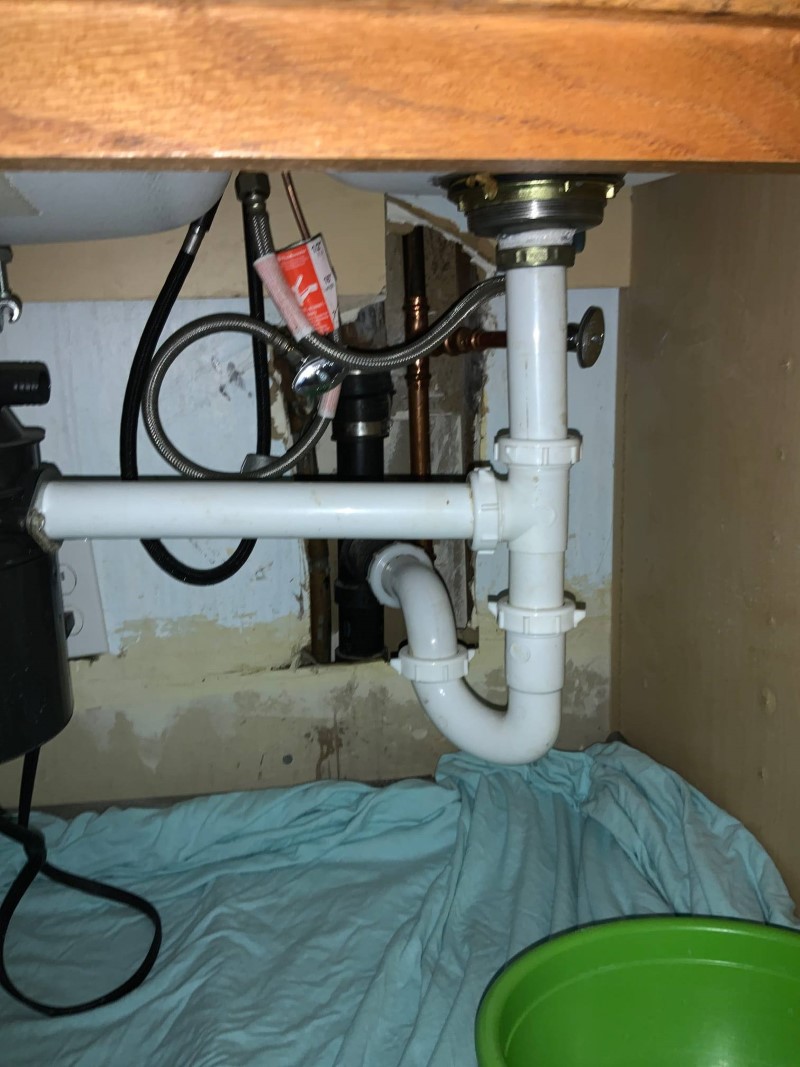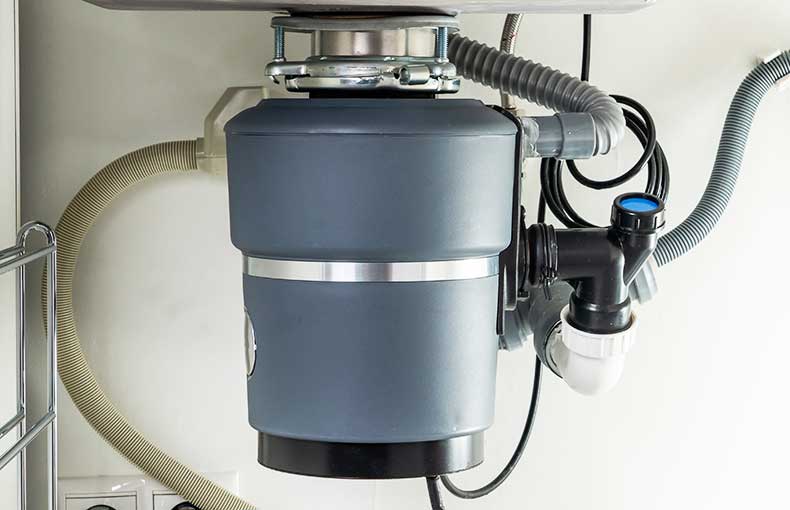Highly-Rated Methods for Resolving a Leak in Your Garbage Disposal
Highly-Rated Methods for Resolving a Leak in Your Garbage Disposal
Blog Article
This great article in the next paragraphs involving Why Is is extremely motivating. Read on and make your own personal conclusions.

Garbage disposals are crucial kitchen home appliances that aid in taking care of food waste effectively. Nonetheless, a leaking waste disposal unit can be an irritating and messy issue to deal with. Thankfully, many leakages can be taken care of quickly with a couple of straightforward steps. In this short article, we will go over how to deal with a dripping garbage disposal effectively.
Introduction
Waste disposal unit are set up under kitchen sinks and are created to shred food waste into smaller sized pieces, permitting it to pass through the plumbing system quickly. While these gadgets are generally trusted, leaks can occur with time as a result of damage, loosened links, or damages to the system.
Typical Reasons For Leaks in Waste Disposals
Worn Seals and Gaskets
Seals and gaskets play a crucial role in preventing water from leaking out of the waste disposal unit. With time, these elements can weaken, causing leaks around the disposal system.
Loose Connections
The connections between the garbage disposal and the pipes system can become loosened with time, causing water to leak out during procedure.
Splits or Openings in the Disposal Device
Physical damages to the waste disposal unit, such as splits or openings in the real estate, can likewise lead to leaks.
Determining the Source of the Leak
Before trying to deal with a leaking garbage disposal, it is necessary to identify the source of the leakage. This can normally be done with visual inspection or by performing simple examinations.
Visual Examination
Examine the waste disposal unit device thoroughly for any kind of signs of water leakage. Pay attention to areas around seals, gaskets, and link points.
Evaluating for Leaks
One way to check for leakages is by running water via the disposal device and looking for any type of visible indications of leakage.
Tools and Materials Needed for Fixing a Leaking Garbage Disposal
Prior to starting the repair service procedure, gather the necessary tools and materials, consisting of a screwdriver, flexible wrench, plumbing technician's putty, replacement seals or gaskets, and epoxy or patching material for repairing cracks or openings.
Step-by-Step Guide to Taking Care Of a Leaking Garbage Disposal
Switch off the Power
Before attempting any type of repair services, make certain that the power to the waste disposal unit device is turned off to prevent the threat of electrical shock.
Situate the Leakage
Determine the exact location of the leakage and figure out the cause.
Tighten Links
Utilize a wrench to tighten any kind of loosened connections in between the disposal system and the plumbing system.
Change Seals or Gaskets
If the leak results from worn seals or gaskets, get rid of the old elements and change them with new ones.
Patching Splits or Holes
For cracks or holes in the disposal unit, usage epoxy or an ideal patching product to seal the damaged area.
Testing the Waste Disposal Unit After Repair
As soon as the repair service is complete, examine the waste disposal unit by running water with it to ensure that the leakage has been dealt with.
Preventive Upkeep Tips to Prevent Future Leaks
To prevent future leakages, it is important to perform routine maintenance on your garbage disposal. This includes keeping it clean, preventing putting non-food products or difficult items down the disposal, and occasionally looking for leaks or other concerns.
Final thought
In conclusion, dealing with a leaking garbage disposal is a fairly straightforward procedure that can be completed with standard tools and products. By following the actions outlined in this write-up and practicing precautionary upkeep, you can keep your waste disposal unit in good working condition and prevent costly repair work in the future.
What to Do About a Leaking Garbage Disposal
A leaking garbage disposal often goes unnoticed until you confront a sopping cabinet, a foul-smelling puddle, or an audible drip-drip-drip from the unit. The fix can be frustrating, too, because the leak can stem from a number of components in the system. Fortunately, with a little sleuthing, you can zero in on the leak and—depending on the exact location—stop the icky oozing and repair the component that caused it. Worst case scenario, if it turns out that the garbage disposal must be replaced, installing a new one is a reasonable do-it-yourself task for those with basic plumbing skills. Read on to keep the cash you’d otherwise hand over to a pro.
Prepare to find the leak
Prior to testing the garbage disposal for leaks, unplug it at the wall outlet and turn off the power from the breaker box to prevent electrical shock. Then insert a watertight sink stopper into your sink drain and wipe the unit dry with a clean cloth. In any handy container, mix a few drops of food coloring into a few cups of water, and pour the dyed water onto the sink stopper to help you locate the leak.
Investigate the source
the top, where the disposal meets the sink drain the side, where the dishwasher hose or main drain pipe connects to the disposal or the bottom of the unit Inspect each of these locations while gliding a light-colored rag over the unit; the dyed water will readily show on the rag and reveal the location of the leak. If a leak isn’t immediately apparent, remove the sink stopper and pour a few more cups of dyed water down the sink drain, then check for leaks again. Leaks near the top of the unit are more likely to show themselves while the sink is plugged, while side and bottom leaks are more noticeable while the sink is unplugged.
The metal sink flange that sits directly inside the sink drain is typically sealed around the top with plumber’s putty (a clay-like sealant) and then secured from under the sink with bolts. If the plumber’s putty deteriorates, or the bolts loosen, the flange can no longer form a watertight seal between the sink drain and the disposal—which could cause a leak at the top of the unit.
To reseal the leaky flange, you must first detach the garbage disposal. Start by loosening the screws securing the main drain pipe to the disposal, then loosen the screws in the metal clamp securing the dishwasher hose to the disposal and detach the drain pipe and dishwasher hose from the disposal. Loosen the screws in the mounting ring that connects the disposal to the metal mounting assembly beneath the sink, then pull down the disposal and carefully set it on a clean, dry surface. Loosen the bolts in the mounting assembly with a wrench, then pull down the mounting assembly and set it near the disposal.

Do you appreciate more info about How to fix a pretty consistent leak from my garbage disposal? Try leaving feedback below. We'd be glad to see your opinions about this post. In hopes that you visit us again later on. Sharing is nice. Helping others is fun. I appreciate reading our article about The Handy Guide To Fixing Your Garbage Disposal Leaking.
Call Today Report this page